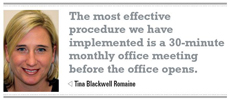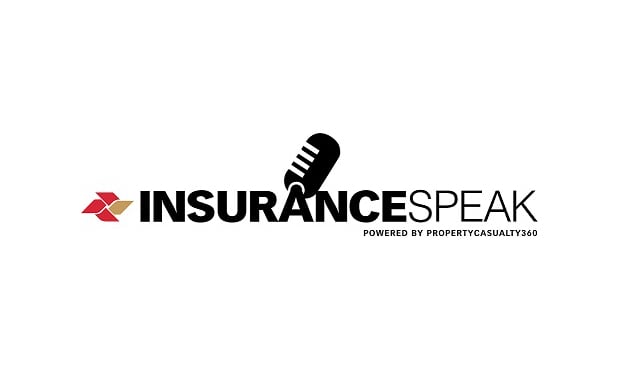Florida's double-digit unemployment rate, failing property market, bank closings, and generally anemic economy have put significant strains on the business community and, ultimately, the insurance industry. This is the “trickle-down” theory at its most egregious. As one of the interviewees for this article noted, “The issue is not new business. It is the existing commercial book that is shrinking because of fewer employees, fewer gross receipts, smaller inventories and fewer vehicles. We are a reflection of our customers.”
These hard economic realities have pushed insurance agencies to improve operational efficiencies and search for new avenues to generate revenue. To gain a real-world perspective of how Florida's agencies are faring, we asked four local insurance executives to share their successes and challenges. Providing insight into how they manage their offices' income, outgo, and upkeep are: Tina Blackwell Romaine, chief operating officer of Blackwell Insurance Agency, Panama City; John Hosey, president of Caton-Hosey Insurance, Port Orange; Ted Ostrander Jr., president and chief executive officer of Lassiter Ware Insurance, Leesburg; and Joe Perry, president of J.P. Perry Insurance, Jacksonville. What are the biggest challenges facing your agency today?
 Blackwell Romaine: The economic downturn. It has caused many of our customers to close their businesses, slowed new construction, and drastically reduced new business ventures. Business itself is a cycle. You have highs and you have lows and you have hard markets and you have soft markets. My father (who started the agency in 1972) always stressed that when times are good you work hard and when times are tough you work hard. You need to keep it even. You cannot have high highs and you cannot have low lows. You just need to keep moving forward.
Blackwell Romaine: The economic downturn. It has caused many of our customers to close their businesses, slowed new construction, and drastically reduced new business ventures. Business itself is a cycle. You have highs and you have lows and you have hard markets and you have soft markets. My father (who started the agency in 1972) always stressed that when times are good you work hard and when times are tough you work hard. You need to keep it even. You cannot have high highs and you cannot have low lows. You just need to keep moving forward.
Hosey: One of our biggest challenges is insureds moving back and forth. Consumers are shopping. We are finding —especially in some of the mid-market business—that people are making decisions based on premium and not necessarily coverages. We need to get insureds to look at the products they are buying and to assess the stability of the carriers involved. We want to make sure people understand what they are buying and what coverages they have. If a catastrophic event occurs, we don't want our clients to find out they don't have certain coverages, or that they have incurred huge out-of-pocket expenses because they selected a large wind deductible to get the lowest premium.
Recommended For You
Want to continue reading?
Become a Free PropertyCasualty360 Digital Reader
Your access to unlimited PropertyCasualty360 content isn’t changing.
Once you are an ALM digital member, you’ll receive:
- Breaking insurance news and analysis, on-site and via our newsletters and custom alerts
- Weekly Insurance Speak podcast featuring exclusive interviews with industry leaders
- Educational webcasts, white papers, and ebooks from industry thought leaders
- Critical converage of the employee benefits and financial advisory markets on our other ALM sites, BenefitsPRO and ThinkAdvisor
Already have an account? Sign In Now
© 2025 ALM Global, LLC, All Rights Reserved. Request academic re-use from www.copyright.com. All other uses, submit a request to [email protected]. For more information visit Asset & Logo Licensing.








